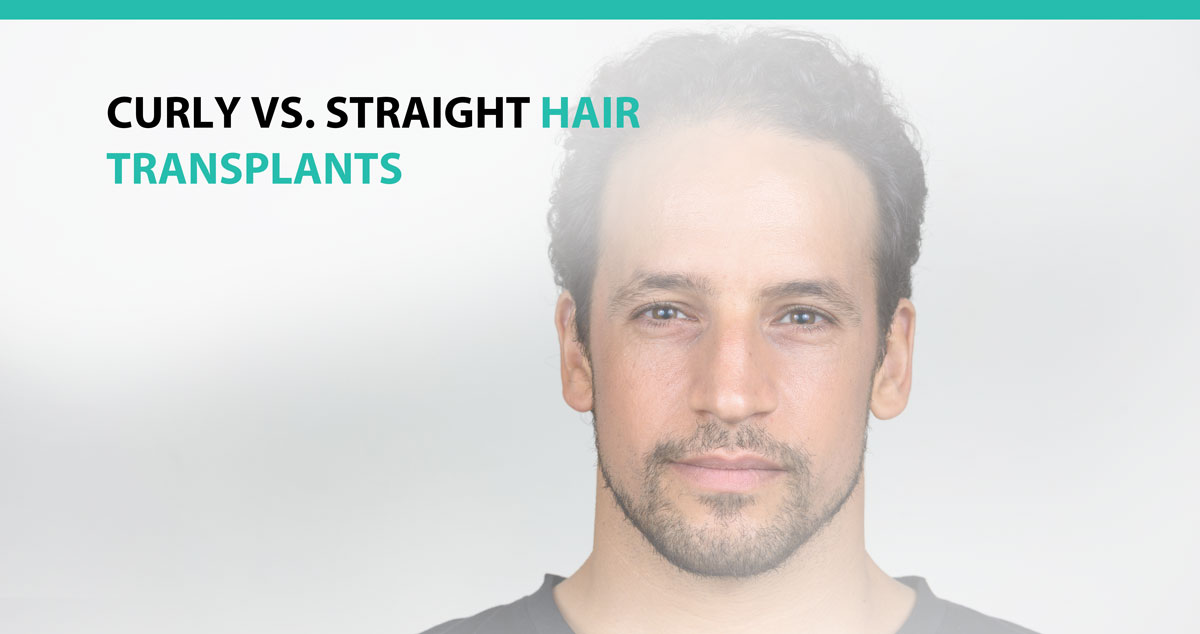
Hair loss happens to everyone regardless of hair type and while hair transplant is possible for individuals with curly or straight hair, the techniques used may vary. This is because one method may work better on a particular type of hair than the other. If you are wondering how your hair transplant will turn out, read on to find out the ideal transplant techniques, advantages as well as the challenges that may occur depending on your hair type.
Curly Hair Transplants
There’s a general notion that Follicular Unit Transplantation (FUT) is the most ideal technique for transplanting curly hair. This method involves removing strips of scalp with hair follicles and transplanting them to the balding hair. Since transplanting curly hair is much more complex compared to straight hair, you should ensure that your surgeon is skilled and experienced.
Advantages of Curly Hair during Transplants
Curly hair has large amounts of hair per follicular unit which makes it easy to achieve the same coverage of bald areas as straight hair, but with fewer follicular units. This means you need a few procedures to restore hair in a balding area as compared to someone with straight hair. What’s more, curly hair makes the surgeon’s work much easier as they take less time.
Also, curly hair transplants result in more voluminous hair compared to straight hair. This is because the curls create an illusion of fuller hair in the balding area.
Challenges Associated with Curly Hair Transplants
Curly hair transplants are complex procedures that require a lot of precision and care due to the nature of hair follicles. Since curly hair takes a spiral form from the tip to the root, it requires extreme care to extract and implant them. This also poses the risk of hair not matching to its new environment, which may create an obvious or unnatural look if the procedure is not done properly.
Since extracting single units and transplanting them while limiting damage can be quite tasking, most surgeons prefer using the FUT method, which is invasive as it involves incisions and sutures.
Straight Hair Transplants
Follicular Unit Extraction is the most ideal technique for transplanting straight hair. This method involves the removal of individual hair follicles from the donor area and transplanting them to the balding areas.
Advantages of Transplanting Straight Hair
Transplanting straight hair using the FUE method requires no use of incision or sutures. It is minimally invasive hence less scarring and less pain. This is because, for most people with straight hair, the follicles are short and thin. This makes it easier for surgeons to extract single follicles without going through tough connective tissues. It is also easier to establish the cause of hair loss in people with straight hair compared to those with curly hair.
Challenges of Straight Hair Transplants
Unlike curly hair, straight hair requires a large number of follicular units to achieve adequate coverage to the balding area. This means more time spent in surgery to achieve the desired results.
In terms of hair density and volume, straight hair gives off a less dense appearance because it tends to lie against the scalp. FUE is also a longer procedure as individual hair follicles have to be extracted and implanted on the recipient area.
Regardless of the generalization on what technique is best for curly or straight hair, there have been successful FUE procedures on curly hair, and people with straight hair have successfully undergone FUT hair transplant procedure. Therefore, it is important to consult a hair restoration expert for assessment and advice on the best hair transplant method for you.
Straight or Curly Hair? Dr. Williams Has a Permanent Solution for Your Need
Whether you have curly or straight hair and need a hair restoration. DR Williams can effectively restore your hair using the best and appropriate technique that suits your condition. With years of experience and access to advanced technologies, you don’t have to worry about unnatural looking results or a mismatch of transplanted hair. Schedule an appointment today for reliable and natural-looking hair restoration results.










